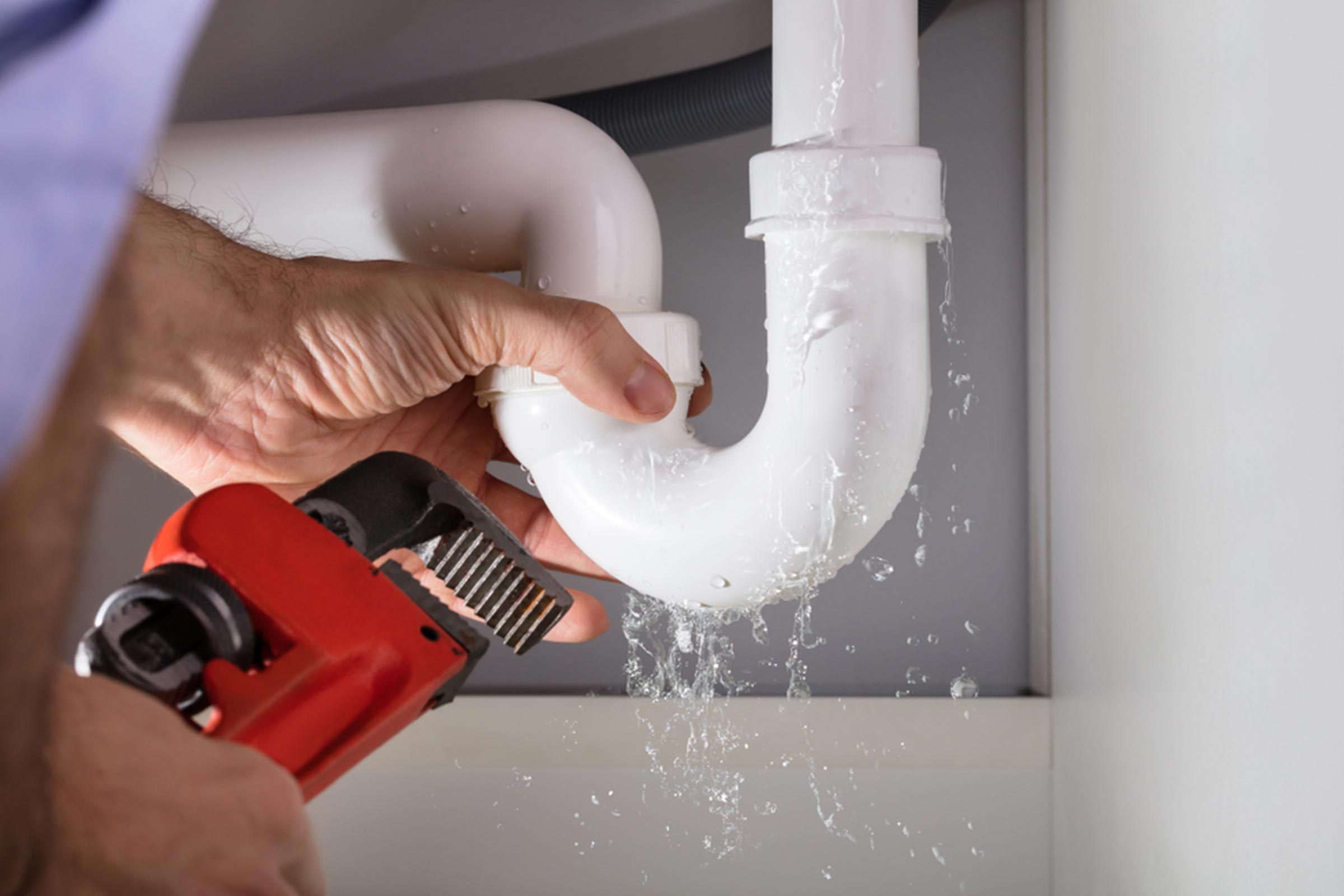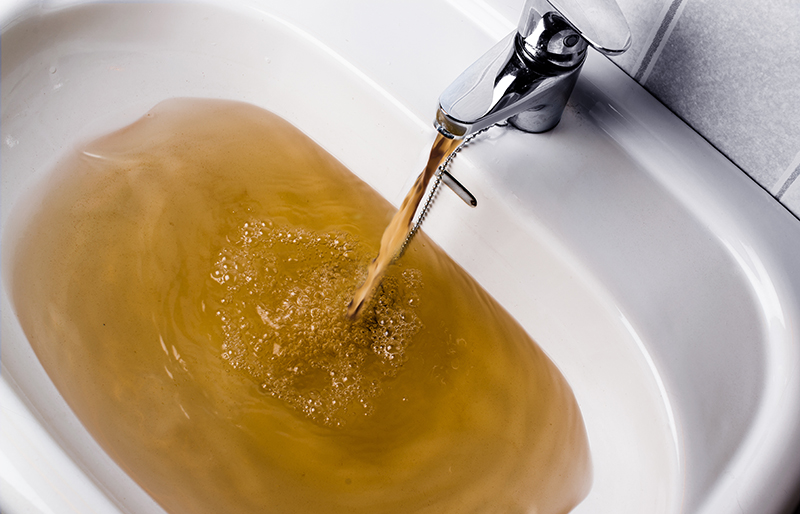We've encountered this article involving Why is My Home Making Strange Plumbing Noises below on the web and reckoned it made sense to talk about it with you on this site.

To identify noisy plumbing, it is important to establish very first whether the unwanted audios happen on the system's inlet side-in other words, when water is turned on-or on the drainpipe side. Sounds on the inlet side have differed reasons: extreme water pressure, used shutoff as well as faucet components, incorrectly connected pumps or various other devices, incorrectly positioned pipeline fasteners, and also plumbing runs having a lot of tight bends or various other limitations. Noises on the drainpipe side typically stem from bad location or, similar to some inlet side sound, a layout having tight bends.
Hissing
Hissing noise that takes place when a faucet is opened a little normally signals excessive water stress. Consult your regional public utility if you presume this problem; it will certainly be able to inform you the water pressure in your location and can mount a pressurereducing valve on the incoming water pipe if needed.
Thudding
Thudding sound, frequently accompanied by shivering pipes, when a faucet or device shutoff is turned off is a condition called water hammer. The sound and vibration are brought on by the reverberating wave of pressure in the water, which instantly has no location to go. Occasionally opening a valve that releases water promptly into an area of piping having a restriction, elbow, or tee fitting can generate the same condition.
Water hammer can normally be healed by installing fittings called air chambers or shock absorbers in the plumbing to which the issue valves or faucets are attached. These tools allow the shock wave produced by the halted circulation of water to dissipate airborne they contain, which (unlike water) is compressible.
Older plumbing systems may have short upright areas of capped pipeline behind walls on faucet runs for the exact same objective; these can at some point fill with water, decreasing or ruining their efficiency. The treatment is to drain pipes the water system completely by shutting off the primary water system shutoff and also opening up all taps. Then open the major supply shutoff and close the faucets one by one, beginning with the tap nearest the valve and ending with the one farthest away.
Babbling or Shrilling
Extreme chattering or screeching that occurs when a valve or tap is activated, which usually disappears when the fitting is opened completely, signals loosened or malfunctioning inner components. The remedy is to change the valve or faucet with a new one.
Pumps as well as home appliances such as cleaning equipments and also dishwashers can transfer motor noise to pipes if they are improperly linked. Link such products to plumbing with plastic or rubber hoses-never stiff pipe-to isolate them.
Various Other Inlet Side Noises
Squeaking, squealing, damaging, breaking, and also touching generally are brought on by the development or tightening of pipelines, usually copper ones providing warm water. The audios take place as the pipelines slide versus loosened bolts or strike close-by house framing. You can often identify the place of the problem if the pipes are revealed; simply comply with the sound when the pipes are making sounds. Probably you will discover a loosened pipeline hanger or an area where pipelines exist so close to floor joists or various other framing pieces that they clatter versus them. Connecting foam pipe insulation around the pipes at the point of call must fix the problem. Make certain straps and wall mounts are secure and also supply sufficient support. Where feasible, pipe bolts must be attached to massive architectural aspects such as structure wall surfaces instead of to mounting; doing so reduces the transmission of vibrations from plumbing to surface areas that can enhance and also move them. If attaching bolts to framing is inescapable, wrap pipelines with insulation or various other resilient product where they get in touch with bolts, as well as sandwich completions of new bolts between rubber washers when mounting them.
Correcting plumbing runs that experience flow-restricting tight or countless bends is a last option that must be carried out just after speaking with a knowledgeable plumbing professional. However, this scenario is fairly usual in older residences that may not have actually been built with interior plumbing or that have seen several remodels, specifically by amateurs.
Drain Sound
On the drain side of plumbing, the principal goals are to remove surfaces that can be struck by dropping or rushing water and to insulate pipelines to contain inescapable noises.
In brand-new building, bath tubs, shower stalls, toilets, and also wallmounted sinks and containers should be set on or versus resilient underlayments to minimize the transmission of audio with them. Water-saving commodes and taps are less noisy than standard models; mount them rather than older kinds even if codes in your area still allow using older fixtures.
Drains that do not run vertically to the cellar or that branch right into horizontal pipeline runs sustained at floor joists or various other mounting present especially troublesome noise troubles. Such pipes are big sufficient to emit considerable resonance; they additionally carry considerable quantities of water, which makes the circumstance even worse. In brand-new construction, define cast-iron dirt pipes (the large pipelines that drain pipes toilets) if you can afford them. Their massiveness has much of the noise made by water going through them. Likewise, stay clear of routing drainpipes in walls shown to rooms and rooms where individuals collect. Wall surfaces containing drainpipes should be soundproofed as was described earlier, utilizing double panels of sound-insulating fiber board and also wallboard. Pipelines themselves can be wrapped with special fiberglass insulation produced the function; such pipelines have a resistant plastic skin (occasionally having lead). Results are not constantly sufficient.
WHY IS MY PLUMBING MAKING SO MUCH NOISE?
This noise indeed sounds like someone is banging a hammer against your pipes! It happens when a faucet is opened, allowed to run for a bit, then quickly shut — causing the rushing water to slam against the shut-off valve.
To remedy this, you’ll need to check and refill your air chamber. Air chambers are filled with — you guessed it — air and help absorb the shock of moving water (that comes to a sudden stop). Over time, these chambers can fill with water, making them less effective.
You’ll want to turn off your home’s water supply, then open ALL faucets (from the bathroom sink to outdoor hose bib) to drain your pipes. Then, turn the water back on and hopefully the noise stops! If you’re still hearing the sound, give us a call to examine further.
Whistles
Whistling sounds can be frustrating, as sometimes the source isn’t easily identified. However, if you can pinpoint which faucet or valve that may be the cause, you’ll likely encounter a worn gasket or washer — an easy fix if you replace the worn parts!Whistling sounds from elsewhere can mean a number of things — from high water pressure to mineral deposits. Your best plan of attack here is to give our plumbing experts a call. We’ll be able to determine where the noise is coming from and what the cause may be, then recommend an effective fix!
Cracks or Ticks
Cracking or ticking typically comes from hot water going through cold, copper pipes. This causes the copper to expand resulting in a cracking or ticking sound. Once the pipes stop expanding, the noise should stop as well.
Pro tip: you may want to lower the temperature of your water heater to see if that helps lessen the sound, or wrapping the pipe in insulation can also help muffle the noise.
Bangs
Bangs typically come from water pressure that’s too high. To test for high water pressure, get a pressure gauge and attach it to your faucet. Water pressure should be no higher than 80 psi (pounds per square inch) and also no lower than 40 psi. If you find a number greater than 80 psi, then you’ve found your problem!
Next step is to give us a call in order to install a pressure regulator. Trust us, you don’t want to wait to resolve this issue. Not only is the sound annoying, but high water pressure can be destructive to your home — including damaging certain appliances, like your washer and dishwasher.
Dripping
You might be accustom to the slow quiet drip your kitchen faucet makes. You might have even tuned out your bathroom sink dripping and drabbing all day long — but it’s time to find its cause.
A slow drip could signify a variety of easy to fix issues, such as a worn out O ring, or loose part. And by ignoring the drip, you could be wasting up to 2,000 gallons of water a year! So start conserving water — get it looked at ASAP.
https://www.pwessig.com/blog/2018/december/why-is-my-plumbing-making-so-much-noise-/

I am very eager about Why Your Water Pipes Are Noisy and How To Shut Them Up and I am hoping you liked the entire page. Be sure to take the opportunity to share this page if you enjoyed reading it. Thank you for going through it.
Get Your Estimate Now
Comments on “Identify & Fix Plumbing Sounds”